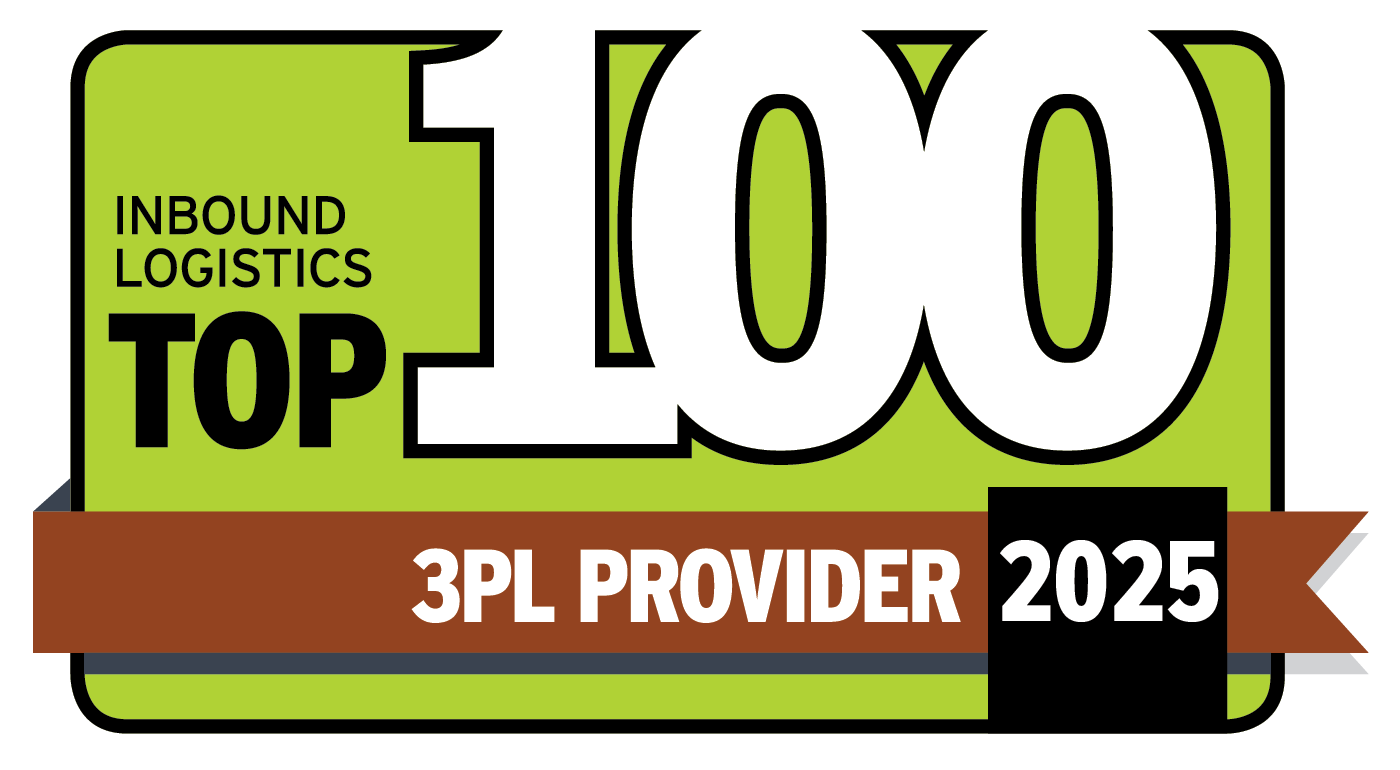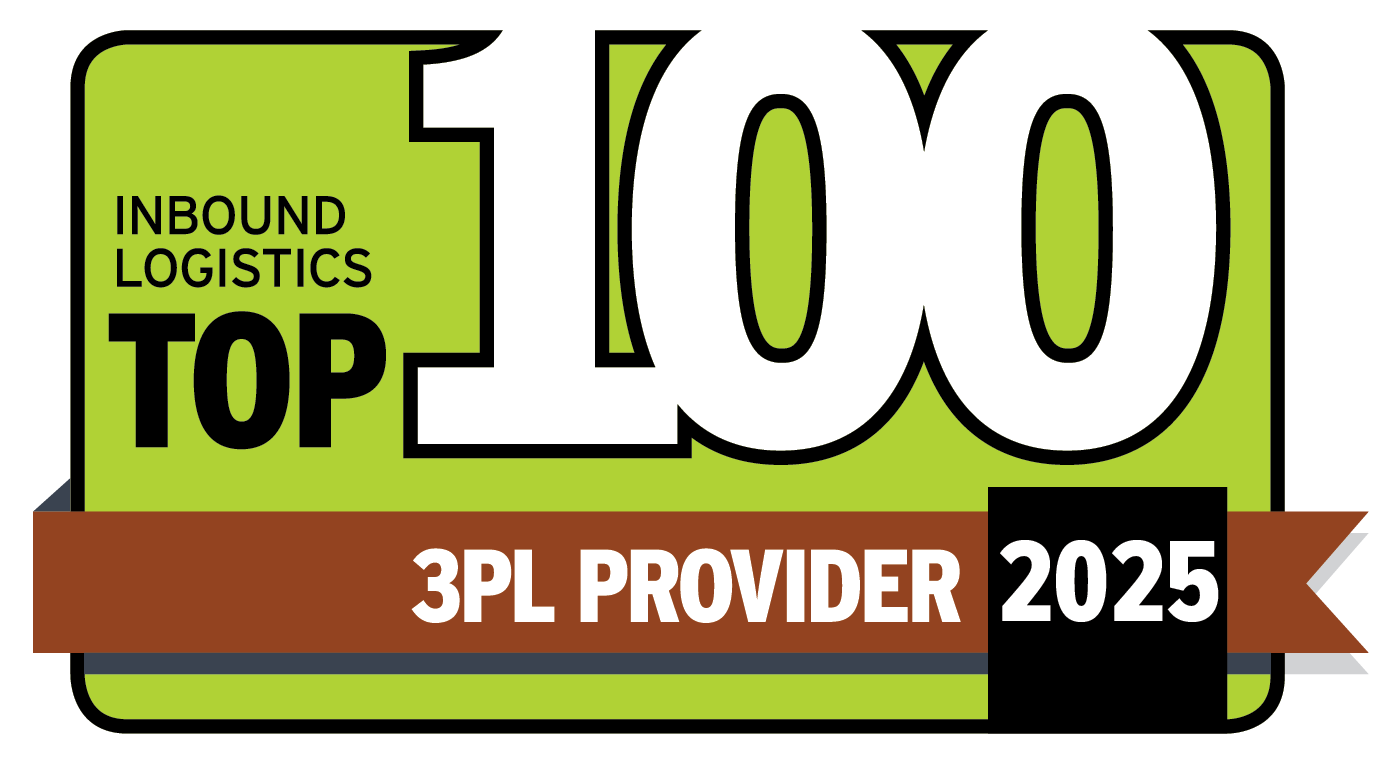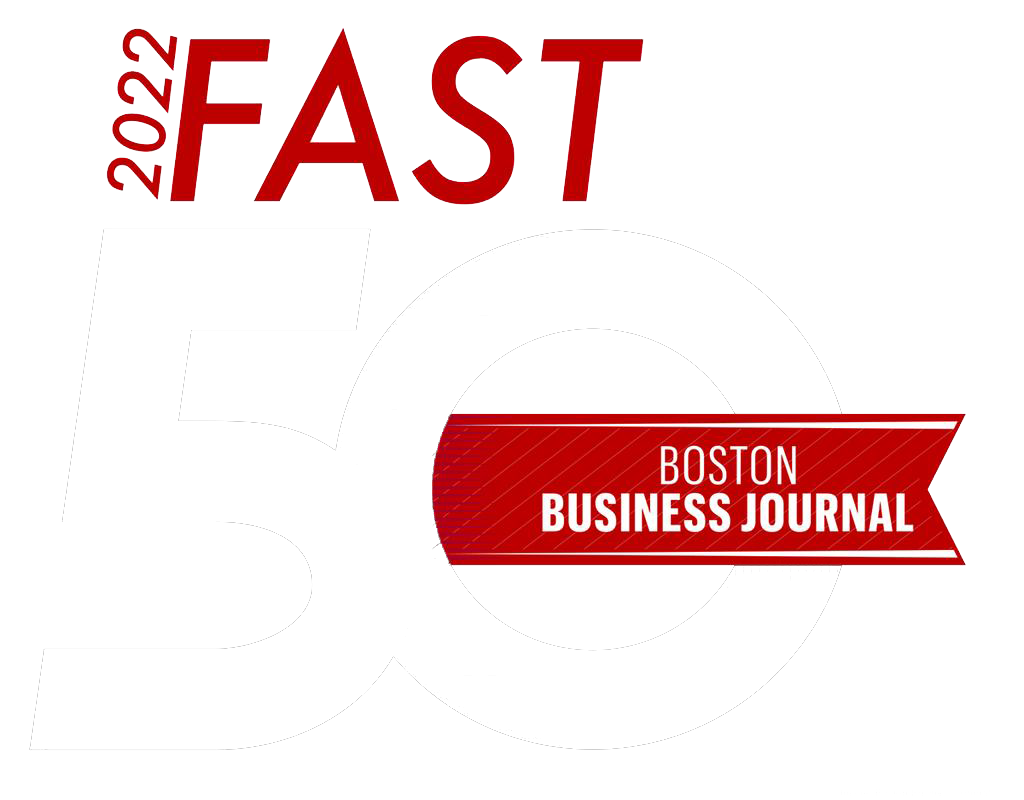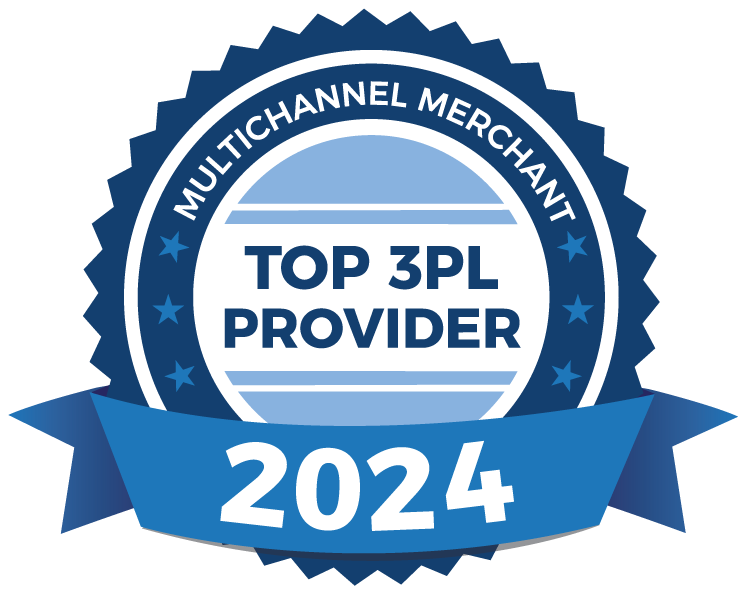The Barrett Blog
The latest news, trends, and insights in supply chain logistics from Barrett's own team of subject matter experts.
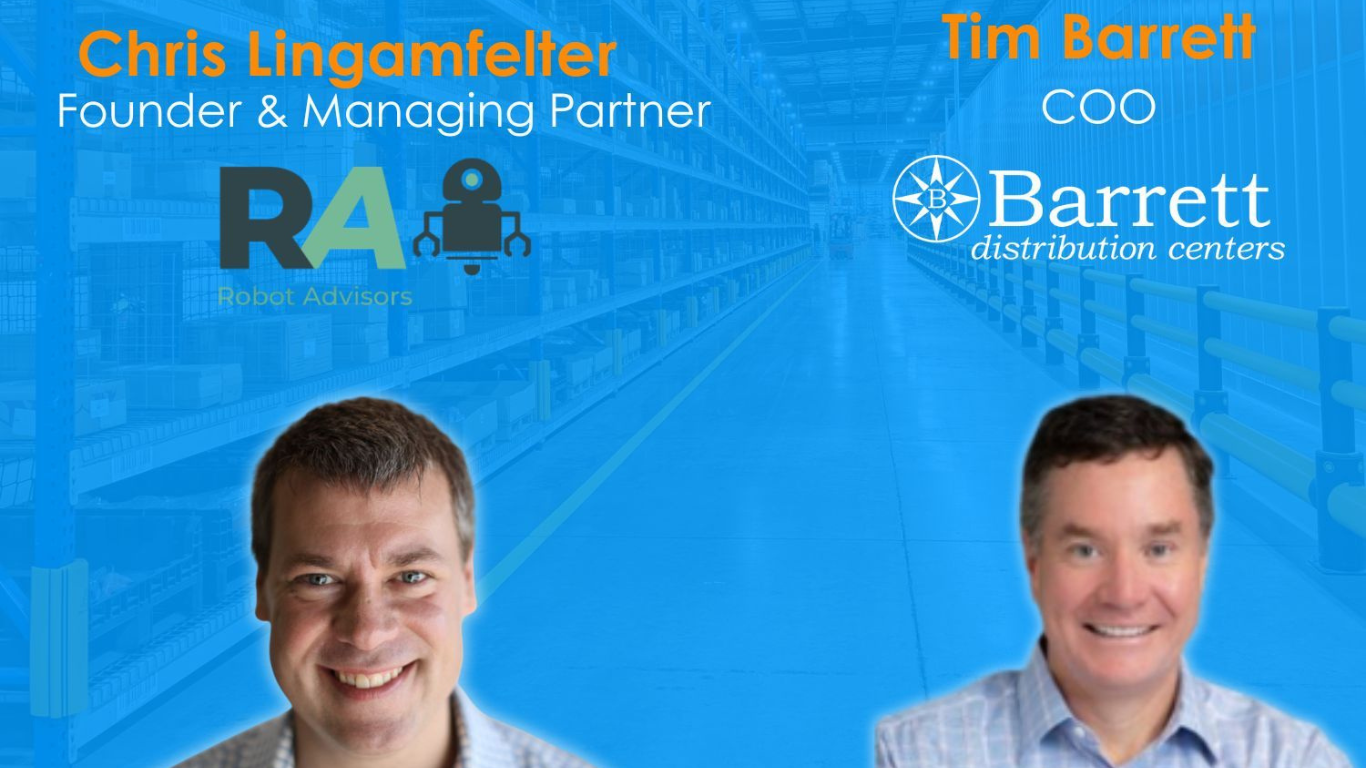
Warehouse automation isn’t new, but determining when it actually makes sense is where most companies struggle. Recorded live at WERC 2025 in New Orleans, this conversation brings together leaders directly involved in real-world warehouse automation decisions. Kevin Lawson interviews Chris Lingenfelter , founder of Robot Advisors, and our very own Tim Barrett , CEO of Barrett Distribution Centers. They sit down for a practical discussion on robotics, drones, and the hype surrounding automation. The focus stays on what actually matters: cost per unit, operational fit, employee experience, and ROI. If you’re evaluating warehouse automation or wondering why past investments haven’t delivered, this breakdown offers practical, experience-backed insights. Why Barrett took a robot-agnostic approach One of the most important takeaways from the WERC session: there is no one-size-fits-all robot. Barrett was an early adopter of autonomous mobile robots (AMRs), including systems from Locus Robotics and Six River Systems. But instead of standardizing on one solution, the company evaluates automation based on: SKU count and product size Order profiles and velocity Facility layout Customer growth expectations A footwear operation with serialized inventory has very different needs than an apparel fulfillment center, and Barrett treats them that way. The result: better outcomes for customers and lower long-term operational risk. Inventory drones: the unexpected game changer While AMRs get the spotlight, Barrett’s biggest automation win came from inventory drones. Using drone-based cycle counting, Barrett increased inventory count frequency by more than 7x while significantly reducing labor costs. For high-accuracy environments, especially serialized footwear inventory, this technology proved essential. The impact went beyond numbers: Higher inventory accuracy Faster exception resolution Better employee roles focused on analysis instead of manual counting In short, automation didn’t eliminate jobs. It made them better. How Barrett really thinks about ROI ROI isn’t ignored, but it isn’t the only metric. Barrett evaluates automation using cost per unit shipped rather than chasing flashy payback models. Capital investments are amortized based on contract life and redeployment potential, then layered with labor and operating costs. The guiding question is simple: Which solution produces the lowest sustainable cost per unit? That approach keeps decision-making grounded and aligned with customer outcomes, not tech hype. “To bot or not” starts with a baseline Chris Lingenfelter, founder of Robot Advisors, reinforced a critical point during the session: You can’t evaluate automation if you don’t understand how your warehouse operates today. Many companies struggle to answer basic questions: What does each unit really cost to ship? Where are labor inefficiencies hiding? Which processes are already working well? Before recommending automation, Robot Advisors helps operators establish a true baseline, then compare technologies objectively. Sometimes, the right answer isn’t robotics at all. That honesty matters. Automation as a competitive advantage for 3PLs For Barrett, automation isn’t just an operational tool. It’s a competitive differentiator. When engaging new prospects, the team often presents: Multiple automation paths Clear tradeoffs between solutions A data-backed rationale for each option That depth of analysis resonates with COOs and CFOs evaluating long-term fulfillment partners. It signals preparedness, transparency, and experience, not guesswork. The workforce question: what changes, what doesn’t As robotics adoption increases, warehouse roles are evolving. At Barrett, automation shifted labor away from repetitive tasks and toward: Exception management System oversight Data analysis Engineering and IT support Over time, this required growing centralized IT and engineering teams, a necessary investment to support advanced operations across multiple facilities. The takeaway from WERC 2025 was clear: automation changes work. It doesn’t eliminate the need for people. Thinking about automation, but not sure where to start? Contact us now for a free supply chain consultation.

FOR IMMEDIATE RELEASE Franklin, MA — Barrett Distribution Centers , a leading third-party logistics provider recognized for its expertise in eCommerce and omnichannel fulfillment, is proud to announce a new partnership with Maxwood Furniture to support its Western US DTC fulfillment operations. The partnership marks a significant milestone for Maxwood as the company continues to scale its nationwide distribution strategy. Maxwood Furniture is a global manufacturer of precision-engineered wood furniture with more than 20 years in the market. The company offers several distinct brands and product lines that ship from its US-based distribution centers or directly from its 1.3 million-square-foot factory in Vietnam. Maxwood serves retailers, design and procurement firms, hotel groups and turnkey project companies around the world. “We walked away from our visit to Barrett’s Montebello operations genuinely impressed with the visibility their systems provide,” said Heidi Germann , senior manager of operations at Maxwood. “Their integration, reporting and thoughtful approach to network design really stood out. Barrett’s geographic footprint fits where we’re headed and their team’s thoroughness helped us determine the best transition path.” After the initial transition, Barrett will begin planning a Dallas warehouse location to support Maxwood’s continued growth. “We are excited to partner with the Maxwood Furniture brand and team,” said Mark Healy , vice president of customer solutions at Barrett. “Our companies are aligned culturally and operationally, which creates a powerful combination to support Maxwood’s market-leading growth initiatives.” The launch is scheduled for mid December with outbound DTC order processing beginning shortly after. About Maxwood Furniture: Maxwood Furniture is a family-owned and operated import and wholesale business that designs, manufactures, and distributes solid wood furniture products across North America and around the globe. Our products are meticulously engineered in our fully accredited factory to meet or exceed US & EU safety standards. We manufacture using the latest equipment & best materials, including industrial-grade hardware, to create products that are made to last. Our customers range from designers to small independent & large retailers such as Rooms to Go, Jordan’s Furniture, and Bernie & Phyl’s. About Barrett Distribution Centers Since 1941, Barrett has provided customized third-party logistics (3PL), direct-to-consumer (DTC) eCommerce fulfillment, omnichannel distribution, managed transportation solutions and retail compliance for clients across all industries, with a focus on apparel & footwear, health & beauty, consumer packaged goods (CPG) and education. Barrett continues to be a leading 3rd party logistics provider in North America, known for superior execution, customer engagement and direct access to senior leadership decision makers. As a member of Inc's fastest growing companies list 15+ times, Barrett is big enough to do the job and still small enough to deeply care about your business. Brands interested in a new 3PL partnership may contact Barrett directly here . Official Release Here
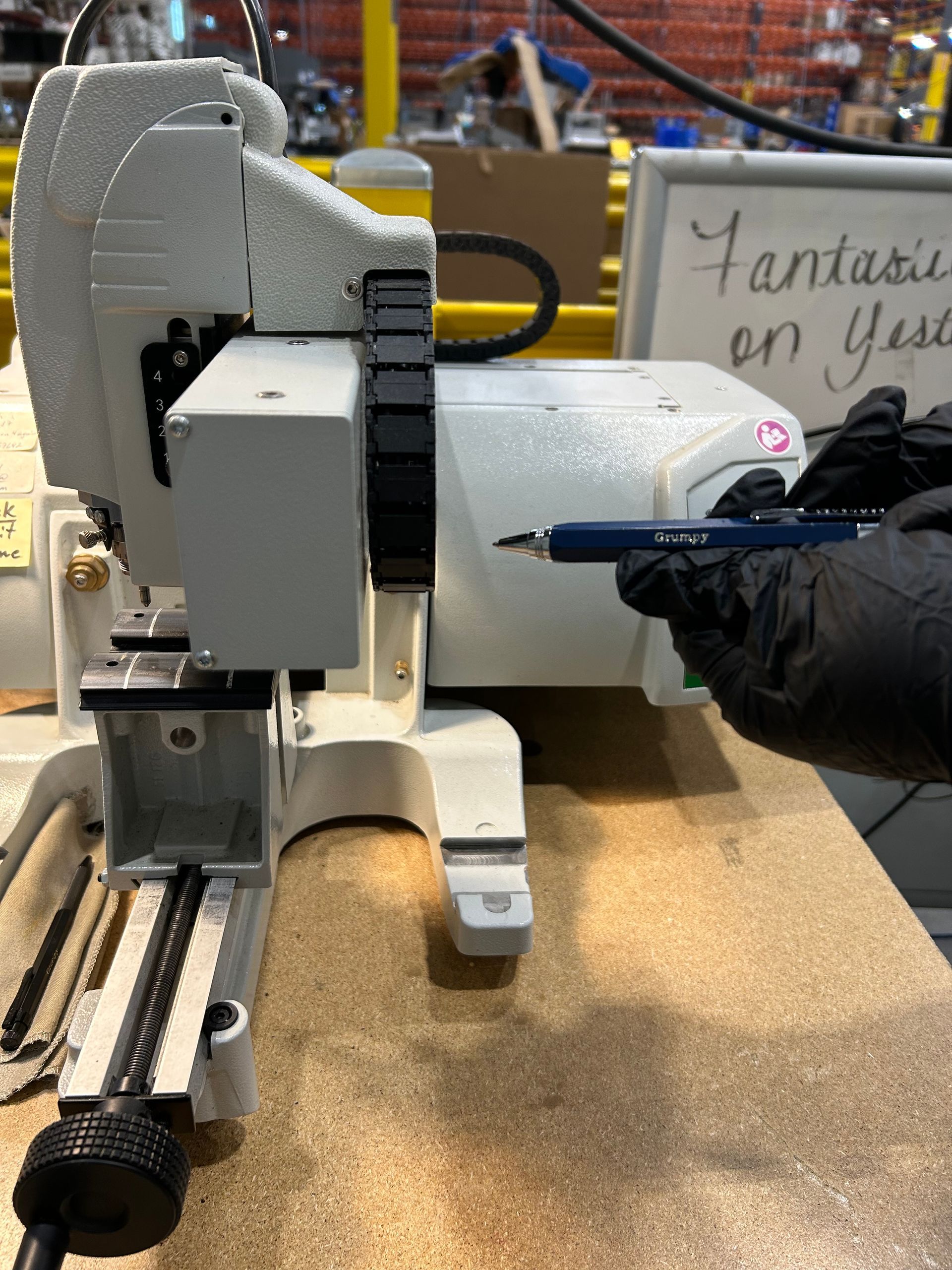
As a marketer, I can’t help but think about how much “fluff” is in advertising and how people are bombarded daily with thousands of generic messages. And as I begin my holiday shopping, it honestly hurts my soul knowing that dad is getting another set of generic socks, sister is getting another plain ceramic coffee mug, and mom is getting another non-stick pan that will end up with the hundreds she already has. Then I started noticing people line up for HOURS to get their bags monogrammed, their journals engraved, and their gifts wrapped with custom notes — and it hit me. Personalization is all about a feeling. The feeling that you thought deeply about someone when choosing a gift, and that it wasn’t just another HomeGoods candle regift (we’ve all been there — no judgment, but I am squinting). And yes, these are the things that keep me up at night. But on a larger scale, I’m always thinking about what brands could be doing better. And the data is in: personalization is one of the most effective ways to stand out. According to Salesforce, 78% of consumers are more likely to repurchase from brands that personalize their offerings , and Adobe reports that 52% of consumers now expect personalized offers from retail brands . What used to be a “nice touch” is now the expectation. Below are the personalization trends we see leading the charge this holiday season — many of which you’ll spot in our recent personalization workflow video. 1. Monogramming is having a moment Embroidery remains one of the most requested personalization services. It creates an emotional connection that gift shoppers love, and when it’s built directly into fulfillment operations, it avoids the bottlenecks brands often face. 2. UV printing is becoming a go-to for fast customization UV printing delivers a premium look quickly and works across a wide range of materials. It provides brands with the flexibility to offer personalization without compromising shipping promises. 3. Laser engraving continues to stand out for gifting Engraving adds depth, permanence, and a premium feel that elevates even simple products. With 86% of shoppers stating that personalization influences their purchasing decisions , engraving has become a strategic differentiator for gifting moments. 4. Debossing is rising in popularity for premium and corporate gifting The subtle, elevated finish resonates with shoppers seeking something that feels intentional and gives professional vibes. It also photographs beautifully, which matters when unboxing content drives discovery. 5. Handwritten notes still matter There’s nothing more human than a handwritten message. A simple note can turn a routine order into a moment worth sharing, and shoppers notice the effort. 6. Gift wrapping expectations are higher than ever Gift wrapping used to be a “nice-to-have." Shoppers want gifts to arrive ready to give, and they expect the wrap to match the quality of the item. When a 3PL integrates wrapping into its workflow, brands get consistency without sacrificing speed. 7. Kitting and curated sets are on the rise Gift sets and bundles remain one of the strongest trends of the season. Customers love the convenience and the elevated presentation, but behind the scenes, kitting requires organization and accuracy — especially during peak. That’s where strong fulfillment workflows matter. 8. Custom packaging shapes the unboxing experience Personalized tissue, belly bands, stickers, sleeves, and inserts transform a simple shipment into a brand moment. Deloitte found that 54% of consumers expect a personalized unboxing experience , and 70% say that custom packaging enhances their perception of a brand . Packaging is all about storytelling. Why personalization matters more this season Across retail, personalization drives: Higher repeat purchases Increased AOV Stronger first impressions Better loyalty More organic social content With 40% of consumers spending more than planned when they receive personalized experiences , the value is undeniable. The brands that stand out are the ones that can deliver personalization consistently, accurately, and quickly — especially when volume spikes. How Barrett brings personalized fulfillment to life Within Barrett facilities, personalization is an integral part of the operational workflow for many of our partners. Our teams support brands with: Monogramming and embroidery UV printing Laser engraving Debossing Gift wrapping Handwritten notes Custom packaging setups Kitting and bundling Real-time visibility and reporting Brands get the elevated customer experience they want without compromising speed or accuracy. Big plans for custom services next year? If your brand wants to introduce new custom services or scale the ones you already have, an experienced 3PL partner is non-negotiable. Contact us for a free personalization supply chain consultation today.

If you’ve ever stared at a 3PL proposal and wondered, “How did they get these numbers?” you’re not alone! ICYMI: Barrett joined The New Warehouse podcast to share how pricing actually works. Below are the top 10 tips and FAQs for your next 3PL search. 1) It starts with data, not a rate card A flat rate card can work for simple, one-size-fits-all operations. That’s not most brands we talk to. We build custom pricing from your data, so the solution fits how you sell and ship. What we ask for first 12 months of order volume Units per order, and per line SKU count, and on-hand per SKU Inventory snapshots, and turns Seasonality patterns, and promos Returns profile, and value-added steps When data is thin, we’ll model with clear assumptions. The fewer assumptions we need, the tighter and more accurate your pricing gets. 2) The core truth: 3PLs sell time A fulfillment operation is a time engine. Every touch, every walk path, and every carton closed takes seconds. These seconds add up to labor, your biggest cost after space. We analyze: Pick and pack methods by product type Walk paths, and slotting to reduce travel Work content at the station, from tissue wrap to branded inserts Throughput targets by hour, to size teams right Small process tweaks create big pricing differences. 3) Who’s in the room when we price? It’s a team sport. Sales brings the brand voice. Engineering models the work and solution. Finance prices the model. Ops reality-checks the floor plan. Marketing joins early to understand your brand experience, so we’re aligned before go-live. 4) Culture fit affects cost more than you think Rates matter, but so does how we’ll work together. When your team engages early, we guess less, build faster, and avoid re-dos. We bring cross-functional teammates to calls and on-site visits. We’ve even secret-shopped your store to unbox like your customer — that tells us as much about labor content as it does about your brand story. 5) The most underrated file: your item master If you give us one perfect thing, make it this: length, width, height, weight, inner and master packs, and hazard flags. The item master drives slotting, cartonization, dunnage, storage mix, and therefore your space and transportation costs. Bad dims mean shipping air — and paying for it. If item data is missing, we’ll run first article inspections during receiving, so we don’t guess. 6) SKU velocity is your pricing cheat code If 20% of SKUs drive 80% of orders, tell us. We’ll set A/B/C slotting, right-size pick faces, and build walk paths that cut travel. That trims seconds per order, which trims labor, and your rate. Control sprawl with SKU retirement, and you’ll see it in your quote. 7) Automation: when and who pays? We don’t push automation for the buzz. We propose it when ROI beats manual — period. Sometimes that’s AMRs or put walls. Sometimes it’s smarter pick logic, and a better layout. Who pays? Shared or usage-based models are common now — think cents per unit instead of a big lump sum For big, dedicated systems (AutoStore, etc.), cost sharing and longer terms make sense. Clear exit and buyout language protects both sides If your five-year growth case is ambitious, we’ll model a path that won’t lock you into a fixed cost you can’t carry if the forecast shifts 8) Cost-plus vs. unit rates Both work. For large, capital-heavy partnerships, open-book cost-plus can make sense. You see the cost stack, agree on a set margin, and share in kaizen savings. Unit rates with a solid assumptions list are the cleanest path for many brands. We’ll recommend what fits your scale, and risk profile. 9) Labor and seasonality without the chaos tax Share your seasonality curves, and we’ll build a flexible staffing plan. We run campus models in several markets, which lets us share trained associates across buildings when peaks don’t overlap. For surprise spikes, we’ll bring you options fast — overtime, weekend shifts, borrowed equipment — with costs so you can pull the right lever. 10) How long should pricing take With good engagement and access to data, two to three weeks is a fair target for a complete custom proposal. Faster is possible for simple needs, but rushing complex work means more assumptions, which often turn into changes later. This is not fun for anyone. 11. What brands can do to get a sharper quote Must-haves Clean item master with dimensions and weights 12 months of orders, lines, and units by day or week Inventory snapshot with on-hand by SKU SKU velocity and ABC classification, if you have it Returns volume, and typical work content Nice-to-haves Packaging standards with photos or SOPs Peak calendars, promo plans, and new channel launches Current cartonization logic or target box profile Compliance guides for retail, or marketplaces Deal-savers One cross-functional call with Ops, Supply Chain, Finance, and Marketing A short on-site or virtual floor walk Agreement on written assumptions in the proposal A quick note on learning curves Be careful if a provider is new to a service and wants you to fund their training via higher handling rates. This industry has clear market expectations for common services. If a price is wildly off the mark, it might not be the right fit. If both sides missed complexity during sales, we handle that with transparency — not surprises. Bottom line Great 3PL pricing isn’t magic. It’s data in, design out, with honest assumptions and a team willing to roll up its sleeves. When we understand your products, peaks, and brand experience, we can engineer the seconds out of the process and the cost out of your quote. Want us to run the numbers for you? Contact us now f or a complimentary supply chain consultation with one our Barrett 3PL experts.
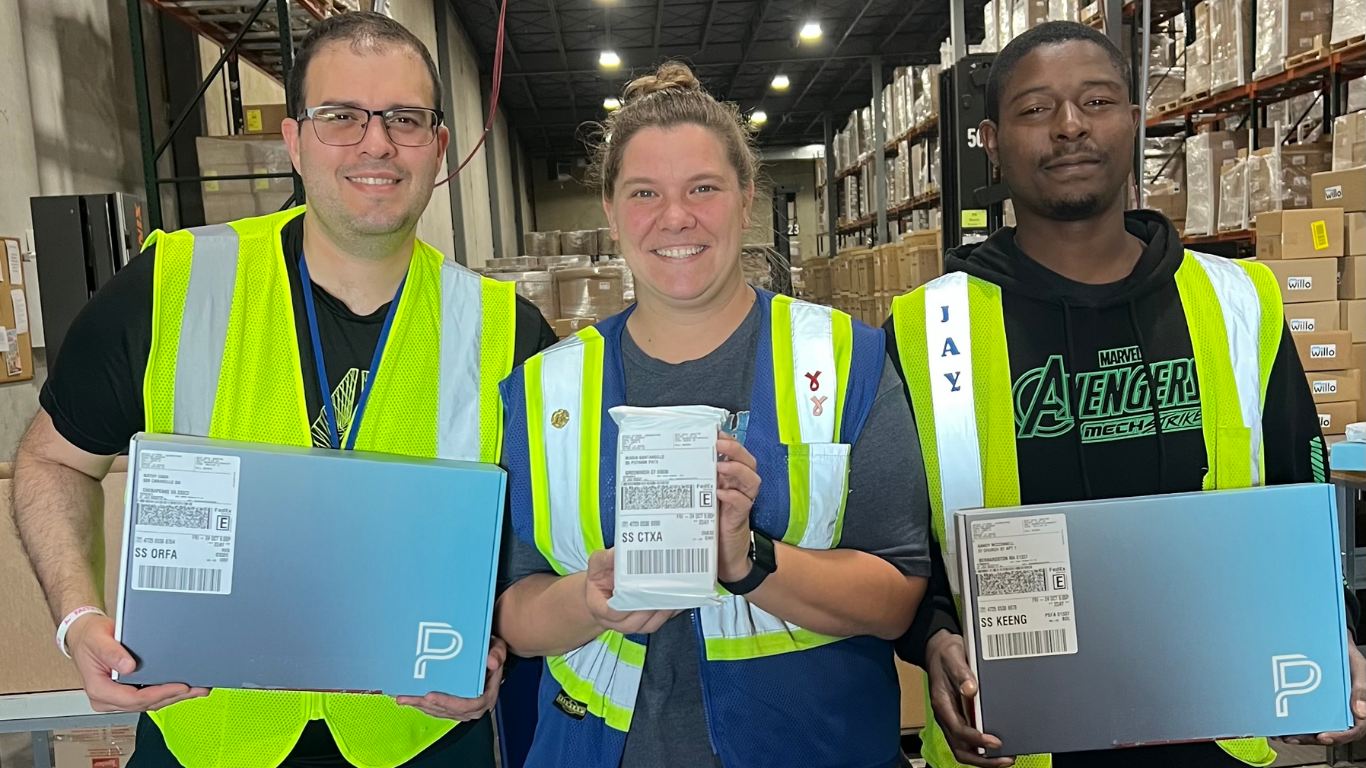
FRANKLIN, Mass. — Barrett Distribution Centers has been selected by Pompa Program , a Utah-based health and wellness company specializing in cellular health analysis and proprietary supplement products, to manage its direct-to-consumer (D2C) fulfillment and transportation operations. The partnership expands Pompa’s fulfillment footprint across the Eastern United States, ensuring faster, more reliable two-day delivery on all orders. Barrett’s Hickory Hill, Tennessee, facility will serve as the dedicated fulfillment hub, offering food-grade, temperature-controlled space and advanced inventory management systems to support its growth. “We chose Barrett because they provide the perfect combination of experience and long-term partnership,” said Bryan Oviatt , director of supply chain at Pompa. “Their proven expertise in health, beauty and wellness made them the clear choice. We’re also excited about future NetSuite integration capabilities to further enhance efficiency. We see Barrett as an extension of our team and look forward to what’s ahead.” From fulfilling cellular health testing kits to distributing premium supplements, Barrett delivers the operational scalability needed to support its expanding customer base. “We’re thrilled to partner with such a fast-growing and innovative health and wellness brand like Pompa,” said Mark Healy , vice president of customer solutions at Barrett. “Our goal is to provide a scalable foundation that supports their continued success and ambitious growth plans.” Pompa’s operations recently launched from one of Barrett’s Memphis distribution centers, a state-of-the-art facility built for high-volume, temperature-sensitive fulfillment. About Barrett Distribution Centers Since 1941, Barrett has provided customized third-party logistics (3PL), direct-to-consumer (DTC) eCommerce fulfillment, omnichannel distribution, managed transportation solutions and retail compliance for clients across all industries, with a focus on apparel & footwear, health & beauty, consumer packaged goods (CPG) and education. Barrett continues to be a leading 3rd party logistics provider in North America, known for superior execution, customer engagement and direct access to senior leadership decision makers. As a member of Inc's fastest growing companies list 15+ times, Barrett is big enough to do the job and still small enough to deeply care about your business. Brands interested in a new 3PL partnership may contact Barrett directly here . About Pompa Program The Pompa Program framework integrates nutraceuticals, personalized nutrition, metabolic support and one-on-one coaching to correct dysfunction at its cellular source. Participants work with trained coaches to identify upstream factors such as heavy metal exposure, hormonal imbalances and gut dysbiosis that drive inflammation and cellular damage. Guided by Daniel Pompa, participants gain practical tools and support to detoxify their bodies, restore metabolic balance and improve overall wellness. Official Release Here

Franklin, MA — Barrett Distribution Centers is proud to announce a new partnership with Willo , an oral hygiene company creating innovative dental products for kids. Barrett will provide warehousing, fulfillment and transportation services to support Willo’s direct-to-consumer (D2C) and Fulfillment by Amazon operations. Willo’s decision came down to culture and size — finding a partner with the operational strength to meet aggressive growth goals while maintaining trust and close collaboration. “Barrett struck the perfect balance for us. They are big enough to support our aggressive growth plans yet small enough to feel like a true partner,” said Rachel Blender , operations manager at Willo. “After going through multiple 3PL changes in the past, I knew we needed a partner we could trust for the long haul. Barrett is that partner.” Willo, a company led by oral health experts, recently launched the Willo AutoFlo+, the world’s first fully automated toothbrush designed specifically for kids ages 5 to 13. The device automates brushing from start to finish, dispensing toothpaste and using the uniquely shaped OptiClean brush head to replicate the perfect brushing motion every time. “When Rachel reached out during the RFP process, I knew right away that Willo was the perfect partner for Barrett,” said Harrison Smith , director of pricing and contract logistics. “Their values, ambition and innovative spirit mirror our own, and that alignment sets the stage for something truly special. We’re excited to collaborate and help bring AutoFlo+ toothbrushes to homes across the country.” Headquartered in New York City, Willo will operate out of Barrett’s Hickory Hill, Tennessee facility. Beyond product innovation, Willo is committed to advancing children’s oral health education through community partnerships and outreach programs. The company plans to expand its product line and reach more families nationwide in the coming years. About Barrett Distribution Centers Since 1941, Barrett has provided customized third-party logistics (3PL), direct-to-consumer (DTC) eCommerce fulfillment, omnichannel distribution, managed transportation solutions and retail compliance for clients across all industries, with a focus on apparel & footwear, health & beauty, consumer packaged goods (CPG) and education. Barrett continues to be a leading 3rd party logistics provider in North America, known for superior execution, customer engagement and direct access to senior leadership decision makers. As a member of Inc's fastest growing companies list 15+ times, Barrett is big enough to do the job and still small enough to deeply care about your business. Brands interested in a new 3PL partnership may contact Barrett directly here . About Willo Founded on a mission to revolutionize children's oral health, Willo combines innovative design, advanced technology, and decades of oral health expertise to create breakthrough dental products for children. Our automatic toothbrush is designed to give kids ages 5-13 a confident smile while parents can breathe a sigh of relief. Developed with dentists and parent-approved, Willo helps kids build strong brushing habits that last a lifetime. Official Release Here
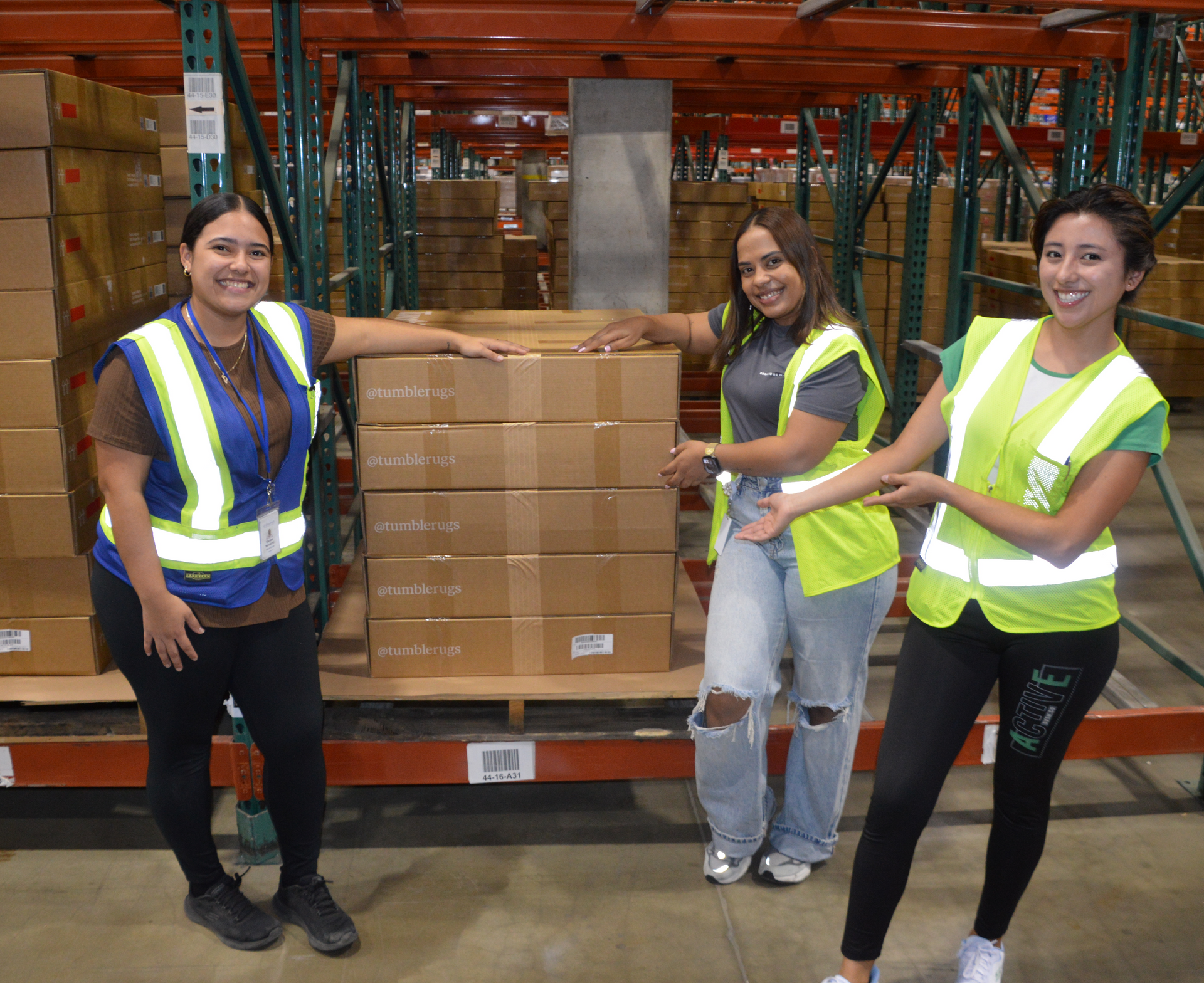
Franklin, Mass. — Barrett Distribution Centers has been chosen by Tumble Living , a Los Angeles–based home goods company known for its washable area rugs, to handle nationwide direct-to-consumer fulfillment from Somerset, New Jersey. By positioning inventory closer to its core U.S. customer base, Tumble will improve delivery times and reduce total supply chain costs. “After evaluating several competitors, Barrett stood out as the best fit,” said Julie Tang , vice president of operations at Tumble. “Their team proved they could scale with our growth, impressed us with strong site visits and backed it up with trusted references and solid technology. We’re excited about what this means for our customers and confident this partnership will take the Tumble experience to the next level.” Key factors in the decision included Barrett’s speed to launch, seamless technology integration and available capacity to support Tumble’s growth. “This new partnership with Tumble highlights exactly what Barrett does best: mobilizing quickly and being able to scale efficiently with high-growth brands,” said Dan Klenkar , vice president of customer solutions at Barrett. “We’re excited to launch this exciting brand in our NJ facility and look forward to supporting their aggressive growth.” This new partnership ensures Tumble can scale operations quickly while enhancing service to households nationwide. About Tumble Living Tumble was founded by Justin Soleimani and Zach Dannett. It was born from their desire to bring a fresh, customer-focused perspective to an industry that's traditionally been slow to evolve. As seasoned furniture industry professionals and frustrated homeowners, they recognized the need for thoughtfully designed, beautiful products at attainable prices—products that adapt to their customers' lifestyles, not the other way around. About Barrett Distribution Centers Since 1941, Barrett has provided customized third-party logistics (3PL), direct-to-consumer (DTC) eCommerce fulfillment, omnichannel distribution, managed transportation solutions and retail compliance for clients across all industries, with a focus on apparel & footwear, health & beauty, consumer packaged goods (CPG) and education. Barrett continues to be a leading 3rd party logistics provider in North America, known for superior execution, customer engagement and direct access to senior leadership decision makers. As a member of Inc's fastest growing companies list 15+ times, Barrett is big enough to do the job and still small enough to deeply care about your business. Brands interested in a new 3PL partnership may contact Barrett directly here . Official Release Here
